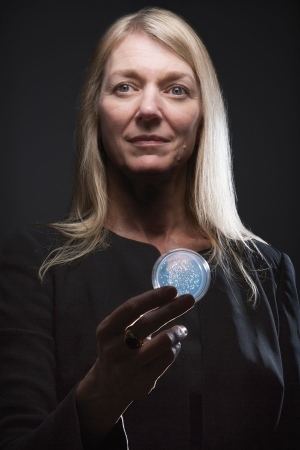Known for Olfaction research Doctoral advisor Robert Weinberg Name Cornelia Bargmann | ||
 | ||
Similar People Richard Axel, Robert Weinberg, H Robert Horvitz, Marc Tessier‑Lavigne, William Newsome | ||
Other academic advisors H. Robert Horvitz | ||
2015 sharp lecture in neural circuits cornelia bargmann
Cornelia Isabella "Cori" Bargmann (born 1961) is an American neurobiologist. She is known for her work on the behavior in the C. elegans, particularly olfaction in the worm. Studying the C. elegans is allowing Bargmann to uncover how neurons and genes affect behavior. Knowing that many of the gene mechanisms in roundworms mimic those of mammals, she is able to manipulate certain genes and observe how that affects changes in behavior. She has been elected to the National Academy of Sciences and had been a Howard Hughes Medical Institute investigator at UCSF and then Rockefeller University from 1995 to 2016. It was announced on September 21, 2016 that she had been named the incoming president of science at the Chan Zuckerberg Initiative, effective October 1, 2016. In 2012 she was awarded the $1 million Kavli Prize, and in 2013 the $3 million Breakthrough Prize in Life Sciences.
Contents
- 2015 sharp lecture in neural circuits cornelia bargmann
- 2016 scolnick prize lecture cornelia bargmann
- Biography
- Notable papers
- Awards
- References

2016 scolnick prize lecture cornelia bargmann
Biography

Bargmann was born in Virginia and grew up in Athens, Georgia, one of four children, and the daughter of Rolf Bargmann, a statistician and computer scientist at the University of Georgia.

She completed undergraduate studies at the University of Georgia in 1981, with a degree in biochemistry. She completed graduate school from M.I.T with a PH.D in the department of Biology in 1987 in the lab of Robert Weinberg. She examined the molecular mechanisms of oncogenesis, and helped identify the role of Ras in bladder cancer. She also did significant work on neu, an oncogene that later lead to significant treatments in breast cancer.

Bargmann then completed a postdoc with H. Robert Horvitz at MIT, working on molecular biology mechanisms of neuroscience. She began working on chemosensory behavior in C. elegans, and achieved several breakthroughs, demonstrating, among other things, that nematodes have a sense of smell.

Bargmann accepted a faculty position at UCSF in 1991, She continued her studies of worm behavior and neural control, focusing on olfaction at the molecular level. She looked for genes similar to those found by Richard Axel and Linda Buck to be the basis of smell and taste, and found those genes in the recently sequenced genome of C elegans. Her work led to discoveries of the mechanisms underlying complex behaviors, such as feeding behaviors. The work has continued to lead to a deeper understanding of the brain, sensory abilities, and neuronal development. Bargmann also identified SYG-1, a "matchmaker" molecule—a molecule that directs neurons to form connections with each other during development.

In 2004, Bargmann moved to Rockefeller University. She served as an Investigator of the Howard Hughes Medical Institute until 2016 before she took the President of CZI. Bargmann’s lab uses a relatively simple organism, the nematode C. elegans, and its extremely sensitive sense of smell to study how genes regulate neuronal development, function, and behavior. Her work has been recognized with numerous awards including election to the National Academy of Sciences.
Bargmann is married to fellow olfactory scientist Richard Axel, a Nobel laureate. Previously, she had been married to Michael J. Finney, who also completed graduate studies at M.I.T. and is now a Director at Sage Science, Inc.
For a vivid portrait of Bargmann as a young scientist working in Weinberg's lab, see Natalie Angier's "Natural Obsessions: The Search for the Oncogene".
Bargmann was featured in the New York Times on June 21, 2011.
